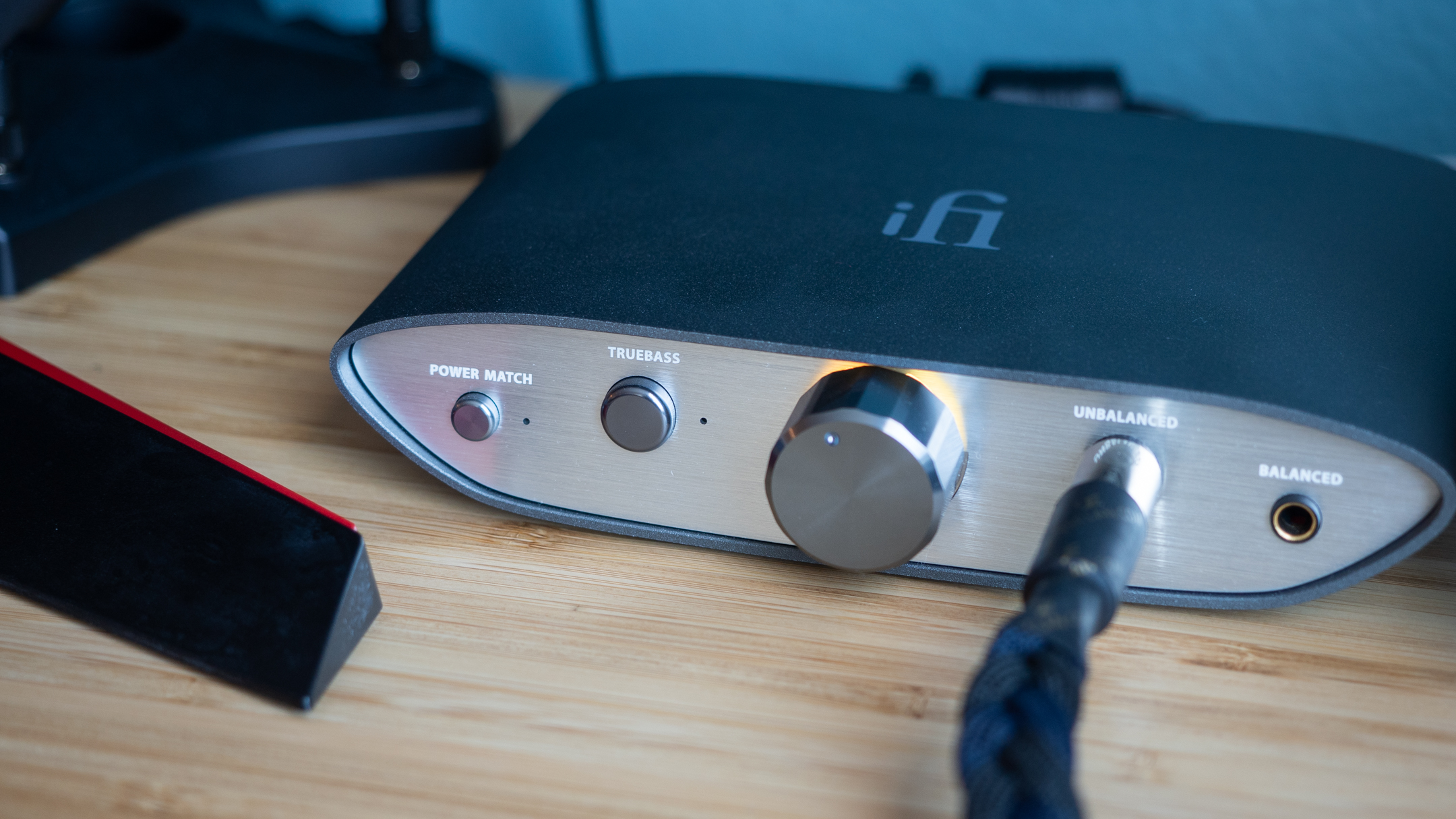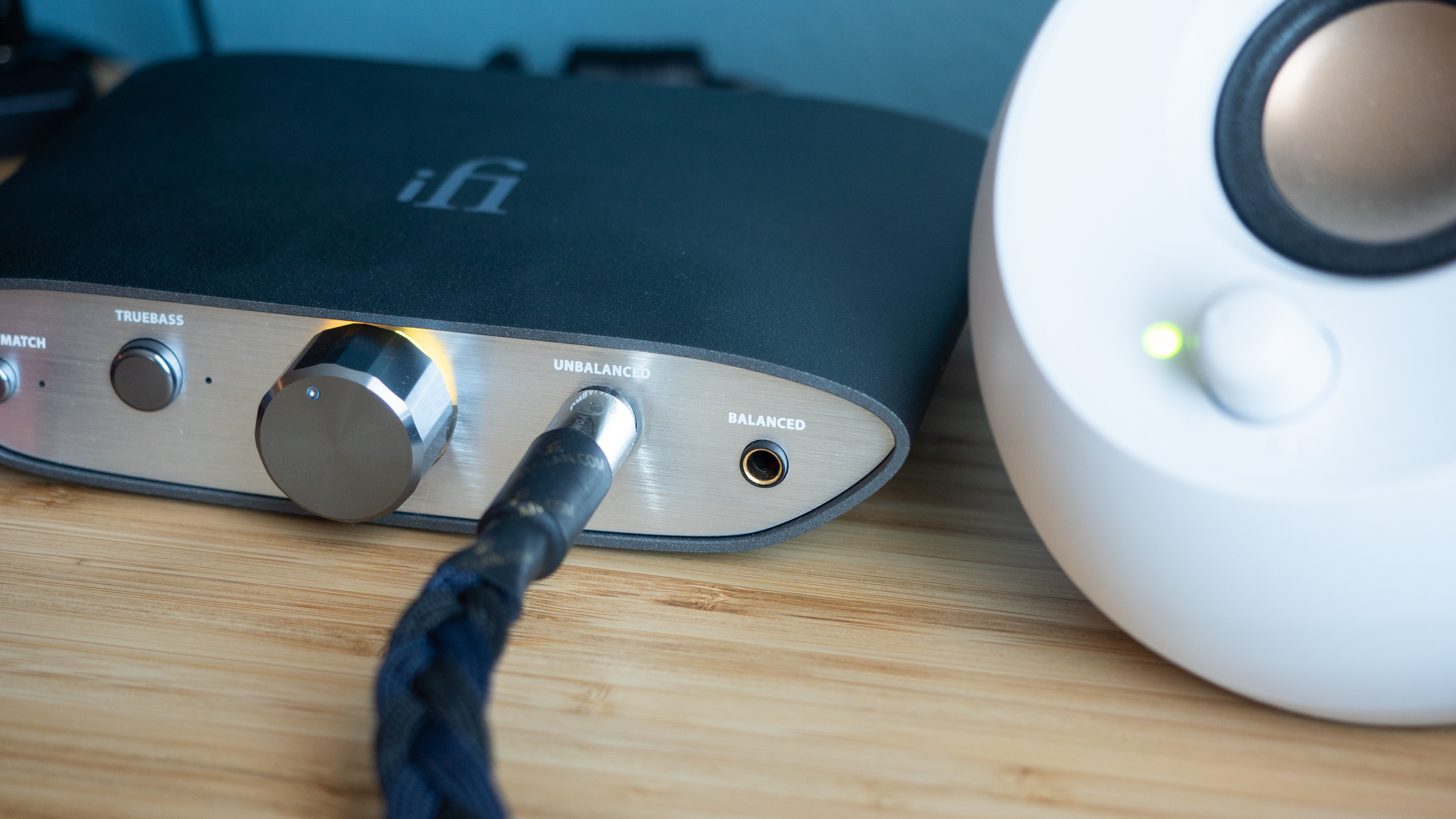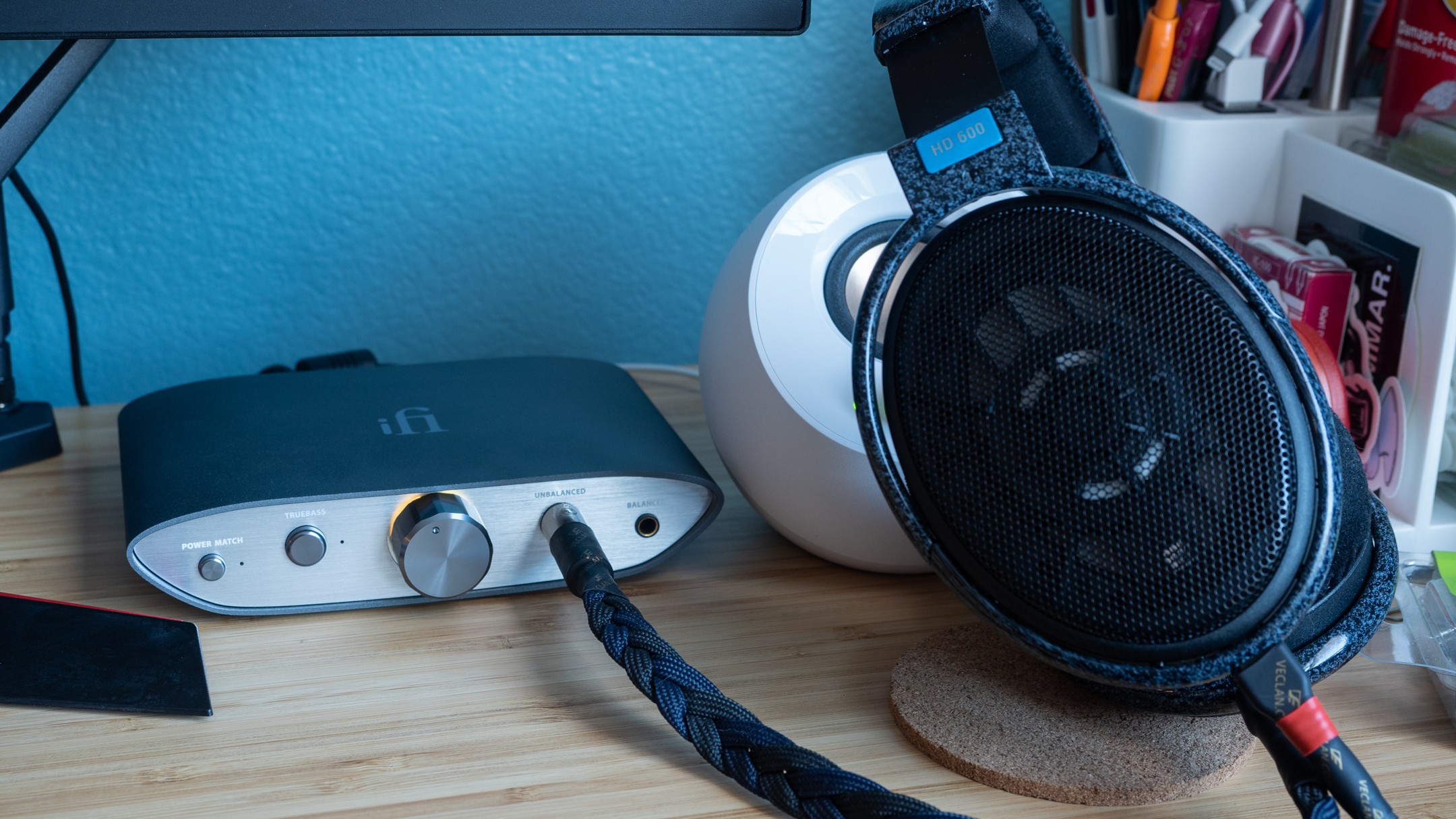TechRadar Verdict
The iFi Zen Dac is one of the best entry-level DACs you can buy. It sounds great, has a ton of features, and can grow with your system as your tastes evolve. While the Zen DAC lacks the dynamics and detail of more expensive DACs, it’s tough to do better for the money.
Pros
- +
Smooth, relaxed sound
- +
Supports high-impedance headphones
- +
Built like a tank
Cons
- -
No power supply included
- -
Always stays on
- -
Short included USB cable
Why you can trust TechRadar
If you’re starting out in the hi-fi hobby, one of the first things you should purchase is a headphone amp and DAC, or digital-to-analog converter. That's because audiophile headphones can be tough to drive, requiring more power than your laptop or phone can supply. That’s where a good headphone amp comes in – a good DAC will improve the sound quality of just about any device you connect it to, whether it’s your laptop, PC, phone, or even TV.
If you don’t have much money to spend on your first headphone setup, the iFi Zen DAC is the perfect starting point. This DAC and amp combo has enough power to drive power-hungry headphones while also working with sensitive in-ear monitors, making it extremely versatile. The iFi Zen DAC has more features than you would think for the price including support for MQA, DSD256, PCM384, DXD384. There’s also balanced inputs, outputs, and the ability to bypass the amp if you want to use it solely as a DAC. While you may not use all of these features, it’s nice future-proofing as you mature during your audio journey.
Looking at the specs on paper, you’d expect the iFi Zen DAC to cost $500 or more but it retails for $129 (£129, about AU$247) making it one of the best audio bargains today. Whether you’re just dabbling in headphone audio or if you simply want a somewhat-portable DAC/amp to take on the go, the iFi Zen DAC is an excellent choice.
Design
The iFi Zen DAC features a trapezoidal design and is made entirely out of metal. The thing is built like a tank and will be able to stand up to the abuse of being tossed into a backpack repeatedly. The unit measures 117mm long, 100mm wide, and 30mm tall. While not the most compact DAC/amp, it is certainly still portable.
On the front of the Zen DAC you’ll find a lovely, smooth-operating volume knob that’s backlit with different color LEDs depending on the sampling rate of the file being played. It’s a nice visual indicator without requiring a screen. There are also buttons for Power Match (gain), TrueBass (bass boost), a 6.35mm single-ended output, and a 4.4mm balanced output.

Around the back, there’s a 4.4mm balanced input, switch for variable and fixed options if you’re using it as a preamp, single-ended RCA outputs, USB-A port and a DC 5V input for the optional power supply. Out of the box, the iFi Zen DAC runs off of USB power only and you’ll have to purchase a $40 wall-wart power supply if you want to help improve the sound. It’s slightly disappointing that the power supply isn’t included but headphones sound good without it and it helps reduce the price.
One important thing to note is that the iFi Zen DAC is always on. There is no power switch to turn the unit on or off as it powers up as soon as it’s connected to a PC. The volume LED will always remain on, even if your computer is turned off, which is annoying if you have the unit in the bedroom.
Sign up for breaking news, reviews, opinion, top tech deals, and more.

Performance
We played a variety of digital formats from streaming to DSD256 to PCM and it handled it all without issue. On Windows, you’ll want to download iFi’s driver and control panel but this isn’t needed for Macs.
The sound from the iFi Zen DAC is excellent, providing enough power for power-hungry headphones like the Sennheiser HD600 and Beyerdynamic DT1990 Pro that we used to test. The DAC/amp also works well with low impedance headphones like Grado’s RS2i and various in-ear monitors. The Zen DAC supports headphones up to 300 ohms, and we found that it had no issues providing enough volume to our stash of 300 ohm headphones.

In terms of tonal balance, the Zen DAC is mostly neutral with a slight warmth that helps tame the harsh highs of the DT1990 Pro. Dynamics are good, though some may wish for more bass response. Thankfully, there’s the TrueBass option to add some mid to low-end punch without intruding on the mids. TrueBass is a nice option to have when hopping between different genres of music.
Playing via USB, the iFi Zen DAC sounds great but if you’re looking to squeeze out a few extra drops of performance, the optional iFi power supply is worth purchasing. The amp sounds more less strained at high volumes and there’s slightly more detail with the optional power supply.

Verdict
The iFi Zen DAC is an excellent DAC and amp for the price. The unit has support for most major hi-fi audio formats as well as balanced connections, which is rare for entry-level audio products. While the Zen DAC isn’t the last word in sound stage, dynamics, or detail retrieval, it still manages to elevate the music listening experience. You’ll have to step up to a much more expensive DAC/amp like the Chord Mojo if you want even more performance.
In terms of competitors, Schiit Audio’s Fulla 3 is a good-sounding alternative and cheaper at $99 (£110, about AU$210) but lacks the features of the iFi Zen DAC. Even the more expensive and cheekily named “Schiit Stack” (Magni and Modi combined) doesn’t have the features of the iFi. The $150 (around £115, AU$200) Creative Sound BlasterX G6 is also a good option if you like the company’s DSP options.
- Want a hi-fi experience when you're out and about? Don't miss our guide to the best portable DACs

